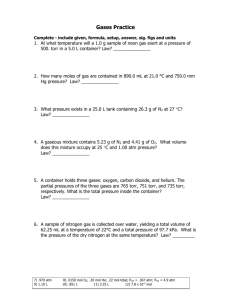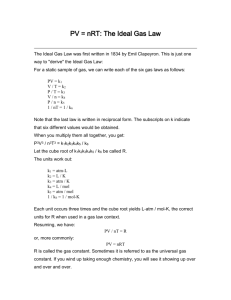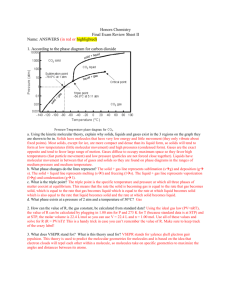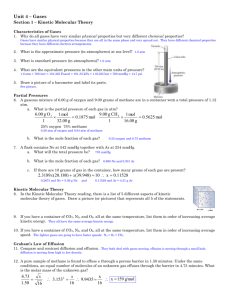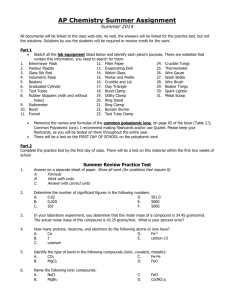Gen Chem 115 CH 10 Properties of Gas WS ANSWERS
advertisement
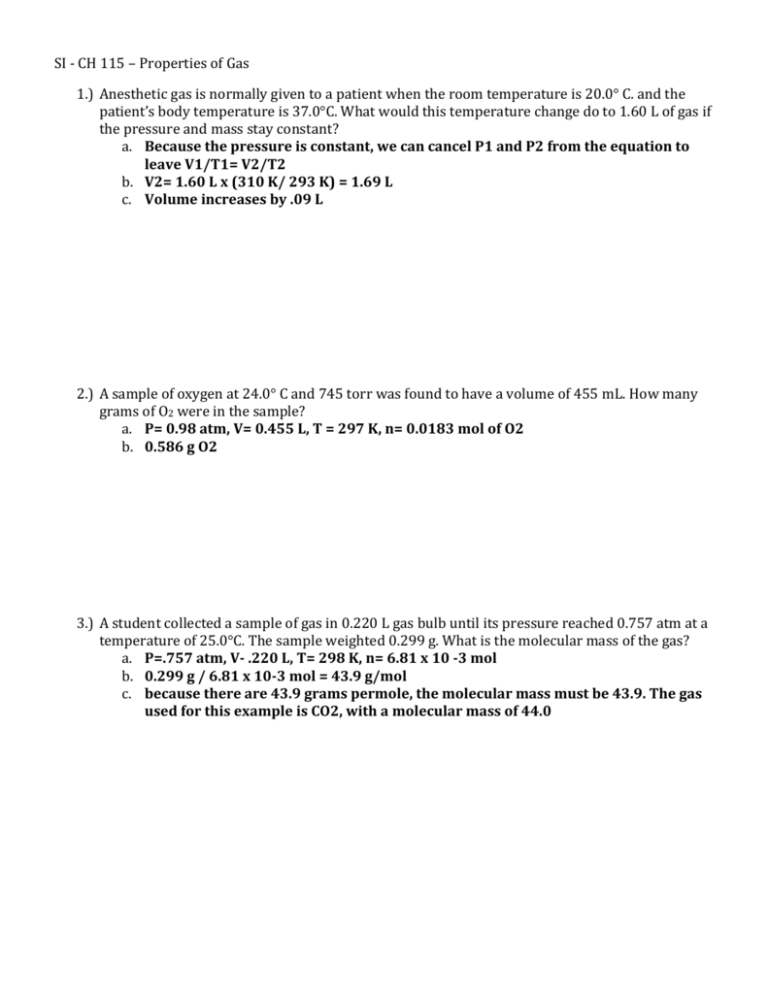
SI - CH 115 – Properties of Gas 1.) Anesthetic gas is normally given to a patient when the room temperature is 20.0° C. and the patient’s body temperature is 37.0°C. What would this temperature change do to 1.60 L of gas if the pressure and mass stay constant? a. Because the pressure is constant, we can cancel P1 and P2 from the equation to leave V1/T1= V2/T2 b. V2= 1.60 L x (310 K/ 293 K) = 1.69 L c. Volume increases by .09 L 2.) A sample of oxygen at 24.0° C and 745 torr was found to have a volume of 455 mL. How many grams of O2 were in the sample? a. P= 0.98 atm, V= 0.455 L, T = 297 K, n= 0.0183 mol of O2 b. 0.586 g O2 3.) A student collected a sample of gas in 0.220 L gas bulb until its pressure reached 0.757 atm at a temperature of 25.0°C. The sample weighted 0.299 g. What is the molecular mass of the gas? a. P=.757 atm, V- .220 L, T= 298 K, n= 6.81 x 10 -3 mol b. 0.299 g / 6.81 x 10-3 mol = 43.9 g/mol c. because there are 43.9 grams permole, the molecular mass must be 43.9. The gas used for this example is CO2, with a molecular mass of 44.0 4.) A gaseous compound of phosphorous and fluorine was found to have a density of 3.50 g/L at a temperature of 25.0° C and apressure of 740 torr. It was also found to consist of 35.2% P and 64.8%F. What is its empirical formula, its molecular mass, and its molecular formula? a. step 1, calculate the empirical formula from the percentage composition; step 2, calculate the molecular mass by relating the grams per liter (density) data to the number of grams per mole using the ideal gas law to find the number of moles in a 1 L sample; step 3, calculate the molecular formula by comparing the experimental molecular mass (step 2) to that calculated from the empirical formula (step1) b. PF3 5.) How many liters of oxygen are needed to combine exactly with 1.50 L of hydrogen at STP a. Volume of O2= 1.5o L H2 (1 L O2/ 2 L H2)= 0.750 L O2 6.) Suppose you want to fill a pressurized tank having a volume of 4.00 L with oxygen-enriched air for use in diving, and you want the tank to contain 50.0 g of O2 and 150 g of N2. What will the total gas pressure have to be at 25 degrees C? a. Moles of oxygen= 1.56 mol O2 b. Moles of nitrogen= 5.36 mol N2 c. P for O2= 9.54 atm d. P for N2 = 32.8 atm e. Ptotal= 9.54 atm+ 32.8 atm= 42.3 atm

